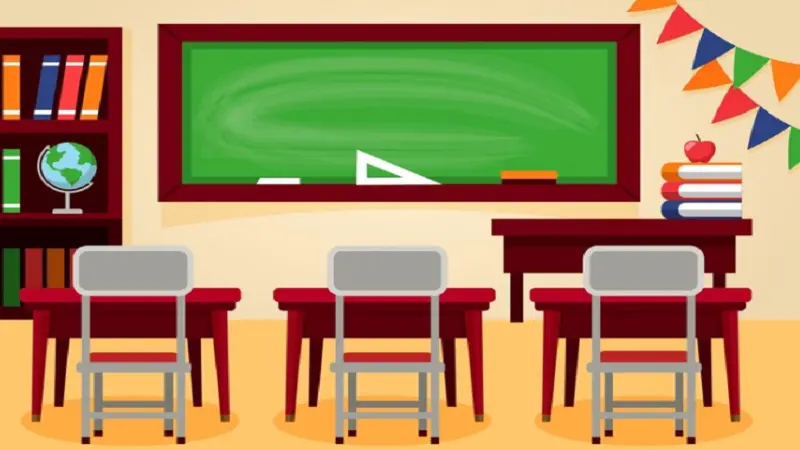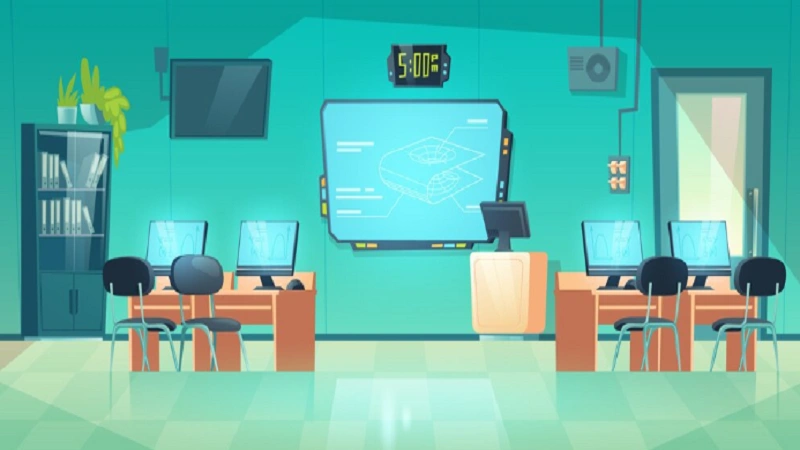Classroom 6X: Transforming Learning Experiences for Students
In today’s fast-paced educational environment, innovative teaching methods are crucial. One approach gaining popularity is Classroom 6X. This concept integrates various learning styles, technology, and collaborative activities to create a dynamic learning experience. In this article, we will explore what Classroom 6X is, its underlying philosophy, key features, benefits for students, implementation strategies, real-world examples, challenges, and future trends.
What is Classroom 6X?
It is an educational framework designed to enhance the learning process by focusing on six essential elements: collaboration, creativity, critical thinking, communication, technology, and real-world application. By incorporating these elements, Classroom 6X aims to foster a more engaging and effective learning environment.
Key Components of Classroom 6X
- Collaboration: Encouraging teamwork among students to solve problems and share ideas.
- Creativity: Fostering original thinking and innovation in projects and assignments.
- Critical Thinking: Promoting analytical skills and the ability to evaluate information critically.
- Communication: Enhancing verbal and written communication skills.
- Technology: Integrating modern tools to facilitate learning.
- Real-World Application: Connecting classroom learning to real-life situations and challenges.
The Philosophy Behind Classroom 6X
The philosophy of Classroom 6X centers on the belief that learning should be holistic and student-centered. It emphasizes the importance of engaging students in their learning journey, allowing them to take ownership of their education. By incorporating multiple elements into the classroom experience, educators can address diverse learning styles and needs.
Why Classroom 6X Matters
It acknowledges that traditional teaching methods may not adequately prepare students for the challenges of the 21st century. By adopting this approach, educators can create a more inclusive and stimulating environment that motivates students to learn actively.
Key Features of Classroom 6X
It incorporates several key features that set it apart from traditional educational frameworks:
1. Flexible Learning Spaces
It promotes adaptable classroom layouts that facilitate group work and movement. Flexible furniture arrangements allow for collaboration and discussion among students.
2. Project-Based Learning
Students engage in hands-on projects that require them to apply their knowledge creatively. This approach encourages exploration and experimentation.
3. Technology Integration
It embraces technology as a tool for enhancing learning. This includes using digital platforms for research, collaboration, and presentations.
4. Differentiated Instruction
Educators tailor their teaching methods to accommodate various learning styles and abilities. This personalization ensures that every student can thrive.
5. Assessment for Learning
Instead of solely focusing on grades, It emphasizes formative assessments. Educators provide ongoing feedback, helping students understand their progress and areas for improvement.
Benefits of Classroom 6X for Students
Implementing Classroom 6X offers numerous benefits for students:
1. Enhanced Engagement
By incorporating interactive elements and technology, students become more engaged in their learning. They participate actively, making the educational experience more enjoyable.
2. Improved Collaboration Skills
Working in groups helps students develop essential teamwork and interpersonal skills. They learn to respect diverse opinions and work toward common goals.
3. Increased Critical Thinking
The emphasis on problem-solving and analytical skills equips students to navigate complex issues. They become adept at evaluating information and making informed decisions.
4. Greater Creativity
It encourages students to think outside the box. This creative freedom fosters innovation and helps them develop unique solutions.
5. Real-World Relevance
Connecting classroom learning to real-life situations enhances the educational experience. Students understand the value of their education and how it applies beyond school.
Implementation Strategies for Classroom 6X
Successfully implementing Classroom 6X requires careful planning and execution. Here are some strategies to consider:
1. Professional Development for Educators
Investing in training and professional development helps educators understand the principles of Classroom 6X. This knowledge enables them to design effective lessons and facilitate collaborative activities.
2. Creating a Supportive Culture
Encouraging a positive classroom culture is essential. Teachers should foster an environment where students feel safe to express their ideas and take risks.
3. Integrating Technology
Utilizing technology effectively is key to Classroom 6X. Schools should provide access to necessary tools and resources, ensuring that both students and teachers are comfortable using them.
4. Encouraging Student Voice
Empowering students to share their opinions and participate in decision-making enhances their investment in the learning process. This practice fosters a sense of ownership over their education.
5. Continuous Assessment and Feedback
Implementing ongoing assessments allows educators to monitor student progress and adapt their teaching strategies as needed. Regular feedback helps students understand their strengths and areas for growth.
Real-World Examples of Classroom 6X
Numerous schools and educators have successfully implemented Classroom 6X principles. Here are a few noteworthy examples:
1. Innovative Schools Program
An innovative school in California adopted Classroom 6X by redesigning its curriculum around project-based learning. Students collaborated on real-world problems, applying their knowledge creatively. The program resulted in improved engagement and academic performance.
2. Technology-Enhanced Learning in Texas
In a Texas school district, educators integrated technology into their classrooms by utilizing digital platforms for collaboration. Students used tools like Google Classroom to work together on projects, enhancing communication and teamwork.
3. Global Learning Initiatives
Several international schools have embraced Classroom 6X by promoting cultural exchange programs. Students collaborate with peers from different countries, gaining a global perspective and developing intercultural communication skills.
Challenges and Solutions in Classroom 6X
While Classroom 6X offers numerous benefits, challenges may arise during implementation. Here are some common obstacles and potential solutions:
1. Resistance to Change
Some educators may resist adopting new teaching methods. To address this, school leaders should provide support and resources, demonstrating the positive impact of Classroom 6X.
2. Resource Limitations
Limited access to technology and resources can hinder implementation. Schools should seek partnerships with local businesses or community organizations to secure necessary tools and funding.
3. Balancing Curriculum Requirements
Teachers may struggle to balance Classroom 6X principles with standardized curriculum requirements. Developing a flexible curriculum that accommodates both aspects can help educators navigate this challenge.
4. Varying Student Readiness
Students may have different levels of readiness for collaborative work. Educators should assess individual needs and provide differentiated support to ensure all students can participate effectively.
Future Trends in Classroom 6X
As education continues to evolve, It will likely adapt and grow. Here are some anticipated trends:
1. Increased Focus on Social-Emotional Learning
Future implementations of Classroom 6X will place a greater emphasis on social-emotional learning. Educators will incorporate activities that promote empathy, resilience, and interpersonal skills.
2. Greater Use of Artificial Intelligence
AI technology will become more prevalent in education. It may leverage AI tools for personalized learning experiences and data analysis to track student progress.
3. Expanding Global Connections
As technology connects the world, It will foster more global collaborations. Students will engage in projects with peers from different cultures, enhancing their understanding of global issues.
4. Enhanced Parent and Community Involvement
Future trends will likely emphasize the importance of involving parents and the community in the educational process. Schools will seek to create partnerships that support Classroom 6X initiatives.
Conclusion
Classroom 6X represents a transformative approach to education, integrating collaboration, creativity, critical thinking, communication, technology, and real-world application. By embracing this framework, educators can create engaging and effective learning environments that prepare students for the challenges of the 21st century. As we look to the future, It will continue to evolve, fostering a culture of innovation and collaboration that benefits students and educators alike. With ongoing commitment and adaptation, It has the potential to redefine the educational experience, making learning more relevant and impactful for all students.





